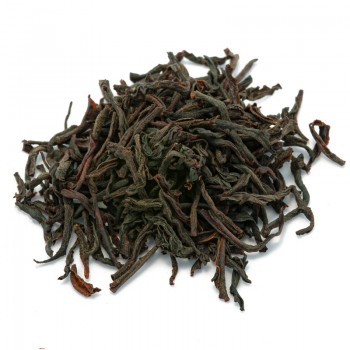English Breakfast tea has become a popular drink around the world, renowned for its intense, energizing flavor.
What type of tea is English Breakfast tea?
Typical English Breakfast black tea is a blend of Indian black teas, which tends to be stronger than other teas on average—making it ideal for an invigorating breakfast. The teas are blended using a broken-leaf process, typical of the first teas imported from the East. This allows for a rapid release of the tea's qualities during the infusion, with light notes of bitterness and astringency, often balanced with milk in the English tradition. Remember that English Breakfast is a black tea, so the leaves that will be broken have been completely oxidized immediately after harvest. Oxidation transforms the leaves from green to black, giving them the traditional dark, coppery color associated with black tea. The distinctive feature that makes a true English Breakfast is the blending of leaves from different origins, creating a unique flavor perfect for breakfast. This variety of Indian tea, with its unmistakable, strong, and robust flavor, provides a pleasant awakening in the morning. Its punchy flavor can be slightly bitter or malty, depending on the Assam teas used in the blend. It's usually a hearty tea, perfect for finishing with a dash of milk, as per British tradition, and a touch of sugar for those with a sweet tooth. The aroma of this English Breakfast black tea blend evokes the scent of freshly cut grass; The more fermented the leaves are, the more intense the aroma will be and the more it will linger in the air for several hours.
The benefits of black tea
Drinking English Breakfast tea means ingesting a good dose of antioxidants, compounds that help our body fight cellular oxidation and the damage it can cause.
English Breakfast is a black tea with a high caffeine content, making it an excellent breakfast or morning tea for energy, concentration, and alertness. Black tea also contains an amino acid called L-theanine, which, combined with caffeine, supports attention span, improves concentration, and helps these benefits last throughout the day. Without the immediate and overly stimulating effect of coffee, black tea stimulates the nervous system in a positive and long-lasting way, acting as a tonic (against physical and mental fatigue).
This tea aids digestive well-being, promoting normal intestinal function. It nourishes the intestines well because English breakfast tea contains antioxidant polyphenols that promote the growth of healthy bacteria in the intestine and reduce the growth of bad bacteria. Furthermore, tea promotes the drainage of excess body fluids, aiding diuresis and the elimination of toxins, helping to combat water retention and bloating. It also facilitates weight management and balance: it stimulates the metabolism and helps reduce fat during lipid metabolism.
Nutritional values of English breakfast black tea
Drinking tea for an English breakfast provides zero calories, while providing antioxidants and minerals. It provides antioxidant polyphenols (catechins, theaflavins, and thearubigins), flavonoids, the amino acid L-theanine, tannins, and enzymes. Black tea contains minerals such as fluoride, calcium, zinc, magnesium, and potassium. It provides the body with methylxanthines, alkaloids that include caffeine (theine) and theophylline.
How to prepare English Breakfast tea
It is made by placing about 3-5 grams of the English Breakfast black tea blend in a cup (250 ml) of hot water at 90-95°C. Let it steep for 3 to 5 minutes before straining and drinking.
Where to buy English Breakfast tea?
Our Natura d'Oriente store guarantees the sale of high-quality black tea online, made from a blend of Indian teas.
You can find it in convenient, stay-fresh 25g, 50g, 100g, 150g, and 300g packs. Loose English Breakfast black tea allows you to calculate the exact grams of product needed for your cup or teapot.
The history of the English Breakfast variety
This tea blend was presumably invented in 19th-century England, although the term "breakfast tea" had been used by tea sellers since at least the late 18th century. Its popularity soared in the United Kingdom thanks to Queen Victoria, who tasted this combination in 1892 at Balmoral Castle in Scotland and returned to London with a supply that became fashionable. Over time, the tradition of breakfast tea spread widely throughout British and Irish culture (where Irish breakfast tea is well known).
However, the history of English breakfast teas is older, and still stems from the blend ofIntensely flavored and caffeinated teas. Traditional breakfast teas were typically prepared with Chinese tea and the addition of stronger Indian leaves, while modern blends can be made with many different types of tea (including Kenyan and Ceylon teas). Blends generally favor Indian teas and include a combination of Assam and Darjeeling, from northeastern India, or other regions. The focus is on flavorful, malty, full-bodied Indian black teas that provide energy and stand up well to milk.
To ensure the strength of this tea, blends are generally never made from a single origin tea – it can be obtained from both tea varieties, Camellia sinensis var. sinensis and Camellia sinensis var. assamica. English Breakfast can contain different teas in different proportions, but they must be blended equally to maintain the intact and distinctive flavor.
Indian teas allow for larger, rolled leaves, traditionally processed for optimal oxidation, which retains the greatest possible amount of essential oils and richer flavors. As for processing, the best type of leaves are used for the preparation of English Breakfast: the smallest, broken ones, as well as any small powdered or solid remnants. The tradition of breaking tea leaves is ancient and dates back to the Chinese custom, dating back to the Ming Dynasty. Before the advent of roasting techniques, fresh tea leaves were steamed, compressed, broken, ground, and whisked together with hot water, creating the precedent for modern Japanese matcha teas.
Later, European merchants importing Chinese teas discovered that they could transport larger quantities on ships by breaking the leaves and packing them compactly. This practice gave rise to the lower-priced, quick-steeping, and bold-tasting varieties of broken-leaf tea, which were very popular among early British tea drinkers.
What are the side effects of black tea?
Although tea consumption is considered safe for adults, some side effects should be considered. Many of these effects occur only if tea is consumed in excessive quantities, due to its caffeine content. Excessive black tea consumption can be harmful, causing agitation and nervousness, heart rate changes, insomnia, diarrhea, nausea, and stomach pain. Therefore, it is advisable to keep consumption to moderate levels (1-2 cups per day).











 No reward points for this product.
No reward points for this product.


![Black tea Honey Black Formosa [Natura d'Oriente]](https://www.naturadoriente.com/3390-home_default/black-tea-honey-black-formosa-.jpg)
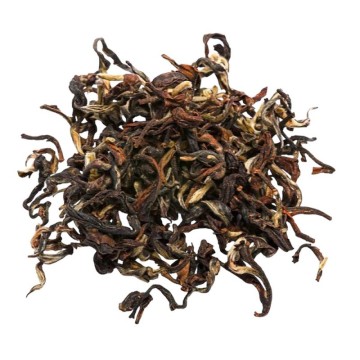
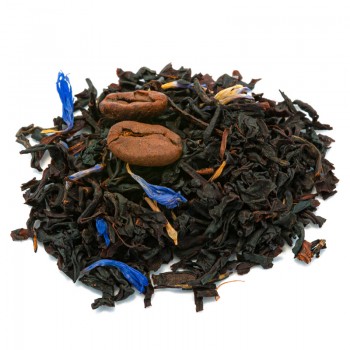
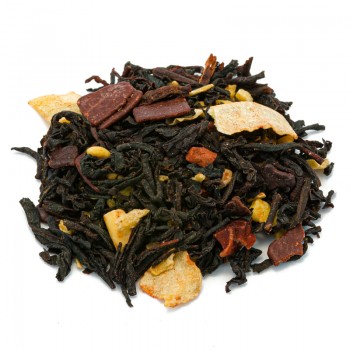



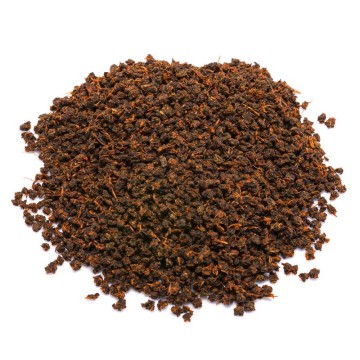
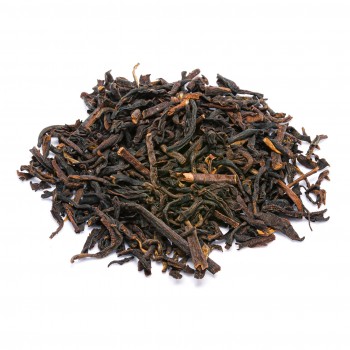
![Black tea Kaproret GFOP [Natura d'Oriente]](https://www.naturadoriente.com/3387-home_default/kaproret-black-tea-gfop.jpg)

